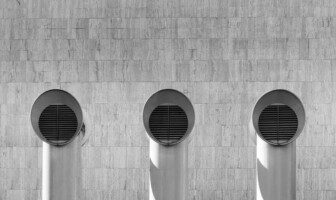
A pergola is a typical garden structure that offers protection against sunlight and rain while providing solutions to entertain guests and enjoy the beautiful views of the outdoors. This appears as a practical investment if you wish to make the most out of your exciting backyard features during summertime.
How to Choose a Pergola?
When choosing the perfect pergola, it should be the one that transforms an ordinary outdoor space into something unique and comfortable to stay with. Your choice of pergola should also enhance the aesthetic value of your precious estate while complementing the rest of your landscape elements. If you want your backyard to experience some serious upgrades, consider these useful suggestions in selecting the best pergola style that will suit your personal space without exceeding your budget:
1. Deciding on the pergola design that you like
The overall design, shape, and color will make a huge difference in how you want your pergola to appear in your backyard.
If the main purpose of your pergola is to cover a specific outdoor space all year round, the design should withstand all forms of weather elements, including heat, moisture, and debris. At the same time, your pergola is expected to harmonize with your current architectural design and lifestyle.
Achieving the right mixture of pergola design and outdoor setting may seem difficult if you don’t know what styles are currently available. Here are some pergola styles which you may consider to beautify your home exteriors while comfortably relaxing on your favorite patio seat:
- Traditional style: A pergola characterized by shed roofing and two or four support columns.
- Open-type: This pergola features horizontal slats running across the entire structure, often supported with four corner columns.
- Curved roof: This style features a gable roofing system that is often constructed with powder-coated aluminum frames and polycarbonate roofing sheets. This allows you to cover larger areas than traditional or free-standing pergolas.
- Retractable type: This design features a built-in motorized device that helps you extend or retract the covering to any extent you want. With its adjustable feature, you are able to control the amount of shading or direct sunlight getting inside without retracting the whole roof.
- Cantilevered: Close to canopy structures, this simple design provides your home a little extra shading on any spot connected to the main house.
- Pitched roofed pergola: If you want something historical, this pergola style features a pitched roof with a lattice enclosure that offers a higher sense of privacy for its occupants.
- Modern steel: This pergola design features robust and straight lines, more suitable for urbanized home settings made of concrete and stucco walls.
Now, the shape of your pergola will likely determine the functionality of your exterior space on top of aesthetics and comfort. Rectangular and square shapes are still the most typical forms because they are easy to install and connect. However, let your creative juices experiment on various shapes, like flat-type, curved, and pitched.
2. Determining the primary purpose of your pergola
Every pergola has its own purpose. You might want to install a cozy pergola to create an additional relaxing place or just to entertain friends without letting them go inside your house. Pergolas are designed to make your garden space more flexible and unique, which you can install either free-standing or attached to a wall. They are now utilized as exterior roof covers that can add more visual attraction to your front porches or patios.
3. Selecting the appropriate material
Pergolas were once built from conventional wood, bricks, and stone. But modern times now offer you a huge variety of options allowing you to create your outdoor space the way you like it. Check them out below:
- Timber: Timber is suitable for open-type pergolas and gazebos, creating a focal point for your garden. Climbing plants and veins can reinforce the presence of natural beauty around your outdoor spaces. However, this will require regular maintenance to keep your pergola in top shape against wood decay.
- Steel: Steel is a popular material for modern pergolas which doesn’t weaken that fast. This requires less maintenance than wood materials, but you need to apply powder coating to counteract rust and weathering.
- Aluminum: This material is resistant to corrosion, rust, and staining, unlike timber and steel. Aluminum only requires less maintenance and it easily blends with contemporary and modern home designs.
- Plastic: For plastic options, you can choose between Plexiglas and polycarbonate which both offer a glass-like surface, but differ in impact resistance. Polycarbonate is the cheaper option, but good enough to provide your pergola a clear view up in the sky.
4. Knowing the Trending Colors for your Pergola
Discovering the trending colors for pergolas can help you establish the tone for your current outdoor spaces. A tan or any wood-like pattern, for instance, may seem perfect for traditional homes with brick or cement-blasted walls. Also consider the use of natural colors to bring out the versatility of your pergola design whether you want to decorate a simple garden or create an imposing outdoor kitchen.
White seems to be the only color that will never get out of style. Combine white with darker tones or neutral tones to make that perfect contrast for your home exteriors. You may try combining these exciting colors of pergolas with your present architectural design and surface colors:
- Tan with wood grains
- Chocolate
- Light brown with a stripe pattern
- Deep blue, navy blue or ocean blue if your house sits on a tropical location
- Forest green if you are surrounded with lush greens and flowering plants
- Warm colors, including red, yellow and brown if your structure is inclined towards traditional
- Cool colors, like blue, black or gray if you prefer a modern outdoor atmosphere
- Aluminum with wood embossment, preferably powder-coated to resist weathering
- Coated alternatives that resemble stone and chevron patterns
5. Accessible for lighting installation
A lot of people tend to overlook the need to install lighting equipment in a pergola because they are more concerned with furniture needs rather than the specific lighting for better illumination. These simple lighting ideas can help invigorate the outdoor spaces underneath your pergola:
- Installation of sufficient general task lighting on key strategic points for the purpose of entertaining guests or performing various leisure activities with the family
- Installation of additional task lighting on specific activity areas, such as the cooking area or center table to help you see clearly
- Installation of Task lighting with less brightness for dining patio tables and seats or carpark areas
- Installation of accent lighting to highlight any surrounding water features or garden walkways
- Installation of reflective lighting to create diffuse or subtle lighting effects within the outdoor space
- Additional independent lighting sources, like table lamps and mobile spotlights, can also be helpful to create a more relaxed atmosphere
- Installation of drop-down lighting or focus lighting to give emphasis on wall displays, ceiling details, and special patio seats
Having a fixed lighting connection reduces any inconvenience of moving any lighting equipment to the pergola just to illuminate any space. But be sure to waterproof any exposed electrical wiring, particularly if you will install a free-standing pergola.
Do you need Roof Cladding on your Pergola?
It depends on your personal preference whether you want an open air-type or a covered pergola. The suitable material for cladding should be durable, fire-resistant, and water-resistant along with great insulating properties against temperature changes or heat retention. Popular options include concrete tiles, terracotta, polycarbonate sheets, aluminum, asphalt, and galvanized iron.
The present climate condition of your home significantly plays a huge part in determining the exact cladding material you will need for your pergola. Other factors should include:
- Material weight since it has a direct impact on your pergola’s load-bearing capacity
- Style selection which may influence the overall appearance and resale value of your property
- Maintenance costs (Rustic tiles, for instance, may likely need regular maintenance jobs than steel or aluminum sheets)
Springtime is the season for experimenting with new things and patio design isn’t an exception. The design of your pergola will definitely rely on different factors from personal taste to cravings for total relaxation at home.
Read Also:






























